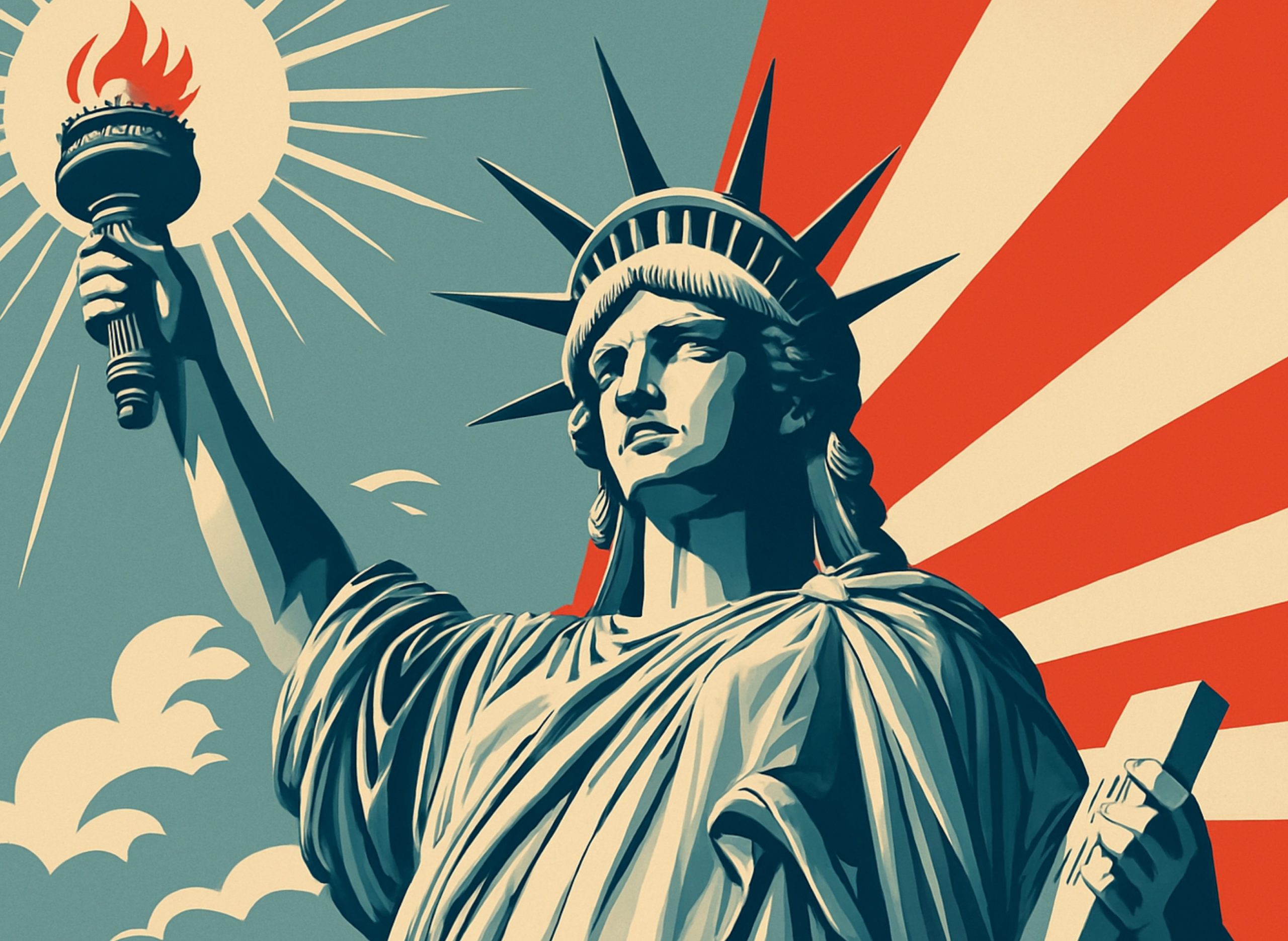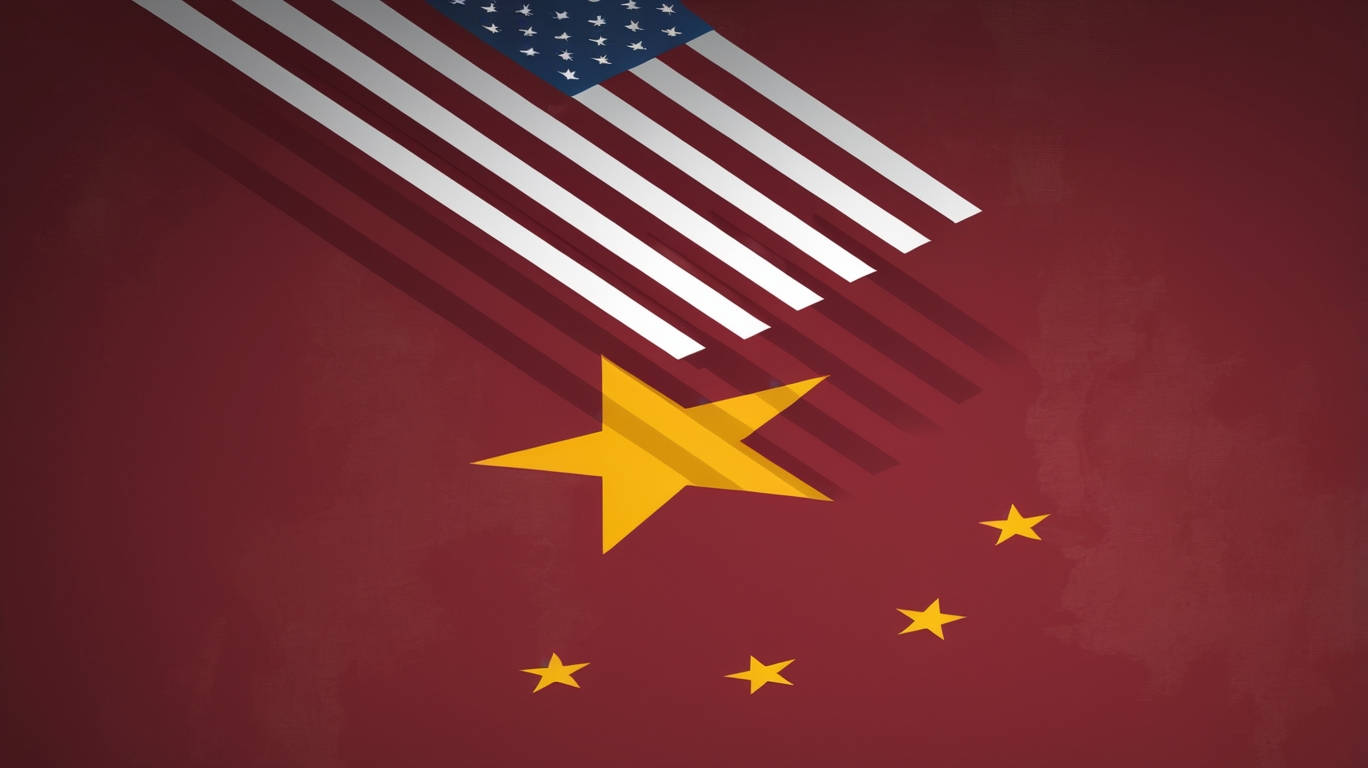

Global Power Struggle
How do Biden and Xi’s leadership shape U.S.-China relations?
By | Avery Prewitt,
OCTOBER 06, 2024 | 11:24 PM
In a time of global uncertainty, the leadership of U.S. President Joe Biden and Chinese President Xi Jinping is more pivotal than ever. Each leader, shaped by years of experience and the distinct political environments of their countries, now faces the challenge of steering their nations through intense rivalry and potential cooperation. With his deep-rooted belief in multilateralism, Biden contrasts sharply with Xi, whose centralized power reflects a vision of China’s resurgence on the world stage. As their paths cross and strategies unfold, the way they respond to one another reveals much about the evolving dynamics between the world’s two most powerful nations, offering a glimpse into the future of U.S.-China relations.
Background
On October 1, 1949, Mao Zedong declared the establishment of the People’s Republic of China (PRC), marking a significant turning point in the global geopolitical landscape. This event, which ended a prolonged and violent civil conflict between the Chinese Communist Party (CCP) and the Nationalist Party, or Kuomintang (KMT), set the stage for the complex U.S.-China relations we see today. The CCP’s victory in this struggle, which extended beyond immediate civil war, was a culmination of the political upheavals initiated by the 1911 Chinese Revolution. The Nationalist forces, led by Chiang Kai-shek, retreated to Taiwan, establishing a separate government that, backed by the United States, persisted as a contentious symbol of Chinese territorial claims. The U.S.’s support for the Nationalists during World War II and its subsequent non-recognition of the newly established PRC set the stage for decades of diplomatic isolation between Washington and Beijing.
The Cold War heightened this estrangement, with the two countries positioned on opposing ideological fronts. Tensions reached new heights during the Korean War, as China and the U.S. found themselves adversaries on the battlefield. Compounding these tensions was U.S.military support for Taiwan, leading to several crises in the Taiwan Strait during the 1950s, where Chinese and U.S.-backed forces nearly clashed over Taiwan’s sovereignty. However, by the early 1970s, both nations had incentives to ease tensions: China sought international legitimacy and economic reform pathways, while the U.S. aimed to counterbalance Soviet influence in Asia. This détente was symbolized by “ping-pong diplomacy” and culminated in the United Nations’ recognition of the PRC, which assumed the Security Council seat previously held by Taiwan.
Fast forward to the present, where the leadership of President Joe Biden (2021–present) and President Xi Jinping (2012–present) comes at a pivotal moment in U.S.-China relations. Their approaches to global power have solidified the structural competition between Washington and Beijing, with both leaders facing pressure to project strength internationally while navigating sensitive domestic issues. Biden, a seasoned diplomat with nearly five decades of experience, has long been immersed in U.S.-China relations, including through exchanges with Xi when they served as Vice Presidents (Biden from 2009–2017 and Xi from 2008–2012). These interactions laid foundational insights into each leader’s style and strategic vision.
Since Xi’s ascent, his administration has sought to expand China’s influence, emphasizing sovereignty, economic growth, and global leadership. Biden’s administration, in turn, has focused on strategic competition, balancing economic interdependence with alliances aimed at containing China’s assertiveness, especially in regions like the Indo-Pacific. Taiwan remains a key tension point, compounded by Xi’s stated objective of “reunification” and the U.S.’s commitment to Taiwan’s defense. This tension reflects the broader geopolitical rivalry and underscores the complex relationship between the two nations that now profoundly impacts global economics, security, and governance.
U.S.-China Relations in the Biden Era
President Joe Biden’s approach to foreign policy represents a return to multilateralism and a concerted effort to reassert American leadership on the global stage. This shift is particularly evident in his handling of U.S.-China relations, where Biden has sought to manage the complex dynamics of competition and cooperation with the world’s second largest economy. Unlike his predecessor, who favored unilateral action, Biden has prioritized rebuilding alliances and strengthening international institutions to counter China’s growing influence. This strategy is designed to present a united front with key allies in Europe and Asia, leveraging collective power to address the challenges posed by China’s expanding global reach.
Central to Biden’s strategy is the recognition of China as the United States’ foremost strategic competitor. The administration has identified several areas where China’s ambitions conflict with U.S. interests, including military expansion in the Indo-Pacific, efforts to reshape global norms and ongoing human rights abuses. In response, Biden has adopted a balanced approach that combines deterrence with diplomacy. This includes bolstering defense capabilities in the region, reaffirming commitments to allies like Japan and South Korea, and taking a firm stance on contentious issues such as the South China Sea. At the same time, Biden remains open to collaboration with China on critical global issues like climate change and public health, acknowledging that cooperative efforts in these areas are crucial despite the broader strategic rivalry.
Economic relations between the U.S. and China under Biden have largely continued on a contentious path, shaped by the legacy of the trade war initiated by the previous administration. Biden has maintained tariffs on Chinese goods as a form of leverage while pushing for reforms in trade practices that have long been a source of friction, such as intellectual property theft and state subsidies favoring Chinese companies. However, Biden’s approach differs in its emphasis on reducing tensions and creating a more stable environment for global trade. This has involved re-engaging with allies to coordinate a collective response to China’s economic practices and exploring opportunities for limited economic cooperation that could benefit both nations, such as joint efforts in climate change mitigation or public health initiatives.
The competition between the U.S. and China has intensified in technology and cybersecurity, which Biden’s administration views as critical to national security and economic dominance. China’s rapid advancements in technologies such as 5G, artificial intelligence, and quantum computing have raised alarms in Washington, prompting measures to protect U.S. technological interests. The administration has imposed restrictions on Chinese tech giants likeHuawei, invested heavily in domestic innovation, and sought to establish global standards that limit China’s influence in emerging technologies. Cybersecurity, in particular, has become a flashpoint, with the U.S. accusing China of state-sponsored cyberattacks aimed at stealing intellectual property and compromising government systems. Biden’s response has been to tighten cybersecurity measures and increase cooperation with allies to counter these threats, reflecting the administration’s broader strategy of managing competition with China through a blend of resistance and collaboration. This approach not only protects U.S. interests but also sets clear boundaries for China’s technological expansion, potentially reshaping the U.S.-China relationship in this crucial area.
As President Biden navigates these complex challenges, his leadership style—rooted in a strong belief in multilateral cooperation and a practical approach to foreign policy—will not only shape the direction of U.S.-China relations but also carry significant implications for the global order in the years ahead. How he balances competition with cooperation will not just set the tone for this key relationship but could also impact the global order for years ahead, underscoring the weight of the current situation.
China’s Strategies Towards the USA During the Xi Jinping Era
Under the leadership of Xi Jinping, China has pursued a foreign policy vision marked by assertiveness and ambition, seeking to redefine its role on the global stage. Xi’s approach contrasts with the more cautious strategies of his predecessors, as he positions China not merely as a rising power but as a central player in shaping the international order. This vision is driven by a desire to enhance China’s global influence, safeguard its sovereignty, and secure its status as a dominant force in world affairs. Xi’s foreign policy is characterized by a combination of strategic initiatives, military modernization, and active participation in global institutions, all aimed at challenging the existing U.S.-led order and advancing China’s national interests.
One of the cornerstone strategies of Xi’s foreign policy is the Belt and Road Initiative (BRI), an ambitious global infrastructure and investment project launched in 2013. Through the BRI, China seeks to build a vast network of trade routes connecting Asia, Europe, and Africa, thereby expanding its economic influence and creating new markets for Chinese goods. The initiative is also a tool for extending China’s geopolitical reach, as it enables Beijing to deepen its ties with participating countries through economic dependency and political alignment. While the BRI has been lauded for fostering development in many regions, it has also drawn criticism from the U.S. and its allies, who view it as a means for China to gain strategic leverage and extend its influence at the expense of other global powers.
In parallel with its economic initiatives, China has undertaken significant military modernization efforts, particularly in the South China Sea, where it has asserted expansive territorial claims. Under Xi, the People’s Liberation Army (PLA) has been transformed into amore capable and technologically advanced force, with a focus on enhancing China’s ability to project power in its near abroad and beyond. This includes the development of advanced naval capabilities, the construction of artificial islands equipped with military facilities, and increasingly assertive actions in disputed waters. These moves have raised tensions with neighboring countries and the United States, as they challenge the existing balance of power in the region and test the resolve of international actors to uphold freedom of navigation and the rules-based order.
Xi Jinping’s China has also sought to expand its role and influence within global institutions, reflecting a broader strategy to reshape international norms and governance structures in ways that are more favorable to Beijing’s interests. China has increased its participation in organizations such as the United Nations, the World Trade Organization, and the International Monetary Fund, where it advocates for policies that align with its national priorities and counters Western influence. Additionally, China has promoted alternative frameworks, such as the Asian Infrastructure Investment Bank (AIIB), to challenge the dominance of U.S.-backed institutions and offer countries an alternative source of development funding. Through these efforts, Xi aims to position China as a leader in global governance, capable of setting the agenda on issues ranging from trade to climate change, and ultimately, to secure a more prominent role for China in shaping the future of the international system.
Xi Jinping’s foreign policy strategies reflect a vision of China as a global power that is not just integrated into the international order but plays a defining role in its evolution. As these strategies unfold, they will continue to influence the dynamics of U.S.-China relations and shape the broader geopolitical landscape for years to come.
Mutual Interactions and Policies of the Two Countries
Biden and Xi’s diplomatic engagements reflect a calculated approach to managing a relationship marked by both rivalry and cooperation. Since Biden took office, he and Xi have communicated through high-stakes virtual summits and phone calls, addressing areas of mutual interest while navigating fundamental disagreements. These interactions, though constructive, underscore the strategic caution both leaders employ, with Biden emphasizing a multilateral approach rooted in democratic principles and Xi projecting China’s rise as a leading global power. Nevertheless, core disagreements on human rights, trade, and technology policies persist, underscoring both leaders’ challenges in balancing engagement with competition.
This cautious balancing act is also evident in each leader’s rhetoric toward the other, revealing distinct leadership styles and political objectives. Biden frequently frames China as both a competitor and a potential partner, stressing the U.S. commitment to a rules-based order while acknowledging the need for cooperation on global challenges. Xi, meanwhile, positions China as a sovereign nation with the right to pursue its own path of development, emphasizing multipolarity and the importance of respecting China’s role on the global stage. This interplay of rhetoric shapes public perception and underscores the strategic narrative each leader seeks to reinforce at home and abroad, reflecting the competing visions for the future of U.S.-China relations.
Beyond rhetoric, a series of critical incidents has tested the resilience of this complex relationship. Cybersecurity issues, human rights concerns, and territorial disputes have sparked a cycle of mutual sanctions, with both countries targeting officials and industries on either side. The Biden administration has maintained and, in some cases, expanded sanctions on Chinese entities linked to alleged human rights abuses in Xinjiang and restrictions in Hong Kong, while China has countered with its own sanctions on U.S. officials. These incidents reveal the depth of disagreement on core values and illustrate a tense atmosphere of mutual distrust that continues to complicate efforts for constructive engagement.
Despite the competitive nature of their relationship, both leaders recognize the need to cooperate on global issues, particularly climate change. As the world’s largest carbon emitter, the U.S. and China are pivotal in addressing climate-related challenges. Biden and Xi have pledged to tackle these issues through commitments made in international forums, including emissions reduction and support for cleaner energy. However, ongoing geopolitical tensions can sometimes overshadow environmental discussions, affecting the consistency of this cooperation. Beyond climate, limited collaboration on health and counter-terrorism further demonstrates the essential areas where mutual interests align, underscoring the delicate balance between rivalry and partnership that continues to shape their interactions.
Future Perspectives and Scenarios
As Biden’s decision not to seek re-election shapes the U.S.-China relationship, both nations find themselves recalibrating for possible shifts in U.S. foreign policy. In the short term, recent developments—such as Biden’s 2024 announcement and the continuing tensions around technology trade bans and Taiwan—create both openings and challenges. China may interpret Biden’s choice as a signal to pursue more assertive policies in the South China Sea and around Taiwan. At the same time, the U.S. likely remains focused on deterring actions that could destabilize regional order. Additionally, Biden’s team aims to secure legacy achievements, which may involve seeking limited yet impactful agreements on climate commitments and easing certain trade tariffs to stabilize relations temporarily.
Looking ahead to the medium and long term, projections suggest that both countries may take cues from the upcoming U.S. election outcomes. Domestically, Biden’s non-candidacy shifts U.S. political focus toward potential successors, which could range from advocates of containment strategies against China to proponents of cautious engagement. Xi’s administration may adopt a “wait and see” approach in China while positioning itself as a stable counterbalance to perceived American inconsistency in Asia. As economic interdependence persists, potential collaboration in areas such as renewable energy development, technology standardization, and pandemic preparedness remains feasible, though restrained by strategic caution.
Conflict points are likely to sharpen around tech policies, especially following the September 2024 export restrictions imposed by the Biden administration on advanced semiconductor materials critical to A.I. development. With China accelerating its self-reliance strategies, tech competition has taken on new dimensions, increasing friction over technological control and economic influence. However, climate change remains a field where mutual gains are possible. For instance, Biden’s final diplomatic engagements include a September commitment to reinforce cooperative efforts with China on carbon reduction initiatives, recognizing that shared environmental concerns are fundamental despite the overarching rivalry.
The regional and global impacts of U.S.-China relations will resonate far beyond these two nations. In Asia, countries like Japan and South Korea continue to strengthen security alliances with the U.S., interpreting China’s assertive policies in Taiwan and the South China Sea as signs of a shifting power balance. Globally, the rivalry influences international trade regulations and shapes global tech standards, with the European Union and other players reassessing policies in response to U.S.-China tensions. As Biden’s term draws to a close, the diplomatic choices made now will shape his legacy and impact the global order, influencing how China, the U.S., and their allies approach the evolving world stage in the years to come.
Transformation of China’s Foreign Policy
Building on the evolving dynamics of U.S.-China relations, it is essential to consider the transformations within China’s foreign policy. China’s approach to international affairs has undergone a profound evolution, reflecting the unique visions of its leaders, from Mao Zedong to Xi Jinping.
Historically, Mao Zedong emphasized ideological alignment, favoring revolutionary solidarity over economic engagement. Under Deng Xiaoping, however, China shifted focus, prioritizing economic reform and international integration, which paved the way for unprecedented economic growth. Deng’s “opening up” policies encouraged cooperation with the West and marked a significant pivot from revolutionary zeal to pragmatic statecraft. This trend continued with Jiang Zemin and Hu Jintao, whose policies leaned toward securing China’s role as a responsible player in global institutions.
Xi Jinping’s era, however, has introduced a new wave of transformation. Under Xi, China’s foreign policy has adopted an assertive approach, with the Belt and Road Initiative (BRI) emerging as a primary instrument for expanding China’s influence. Economic diplomacy has become central as China invests heavily in infrastructure and development across Asia, Africa, and Latin America, positioning itself as an indispensable economic partner. Through this strategy, China has sought to foster economic interdependence and align other countries’ interests with its own, building a soft power network that subtly reinforces its standing without direct confrontation.
Alongside economic diplomacy, Xi’s administration has emphasized soft power through culture and media. Efforts to promote Chinese language and culture globally through Confucius Institutes and cultural exchanges exemplify this shift—Chinese media outlets broadcasting internationally project China’s perspectives, further enhancing its image on the global stage.
Another significant change is the role of technological innovation in China’s diplomatic toolkit. With advancements in digital technology, China has engaged in “digital diplomacy,” using technological partnerships to deepen ties with developing countries. This includes sharing 5G technology and exporting digital infrastructure, which brings economic benefits and establishes long-term technological dependencies favorable to Beijing. Furthermore, China’s investment in artificial intelligence and data security positions it as a leader in digital governance, providing an alternative to the U.S.-led tech ecosystem.
As China’s foreign policy continues to evolve under Xi, these combined strategies reflect a more sophisticated and multidimensional approach. The country’s focus on economic diplomacy, cultural influence, and technological prowess aims to secure its role as a defining force in the global order, positioning it as a formidable counterweight to Western influence in the years to come.
As Biden and Xi shape U.S.-China relations through a mix of strategic competition and occasional cooperation, the future of this complex relationship remains uncertain yet pivotal. With Biden’s policies focused on strengthening alliances and promoting a rules based order and Xi’s emphasis on a multipolar world that underscores China’s sovereignty, both leaders have strongly reinforced their countries’ influence. However, Biden’s impending departure from office injects new variables into an already volatile landscape, where the next U.S. administration could shift policy approaches, affecting the trajectory of engagement with China.
In the broader context of rising global instability, from the conflict in Ukraine to unrest in Iran, the policies of both Biden and Xi carry significant consequences for the global order. Biden’s focus on coalition-building with allies, especially in the Indo-Pacific, suggests a continuing strategy of containing China’s influence. Xi’s policies, meanwhile, project China as a stabilizing force in the Global South, where his administration has aimed to offer alternatives to Western-led institutions. These moves underscore the ideological divide that continues to shape not only U.S.-China relations but also broader global alignments.
The potential repercussions of their policies on the global order are profound. As the U.S. reassesses its leadership role, especially amid the domestic focus on an impending election, China’s growing influence in economic and digital spheres presents a parallel system of governance and power. The outcomes of Biden and Xi’s policies will influence the balance of power in Asia and beyond and determine the world’s approach to key issues like technology standards, environmental policies, and economic dependencies. Looking forward, U.S.-China relations will likely continue to mirror the global turbulence of the present era, with a mix of competition, selective cooperation, and strategic rivalry. Their policies, shaped by internal priorities and external pressures, will remain central to shaping the global order, presenting challenges and choices for countries around the world as they navigate this new era of shifting power dynamics.


